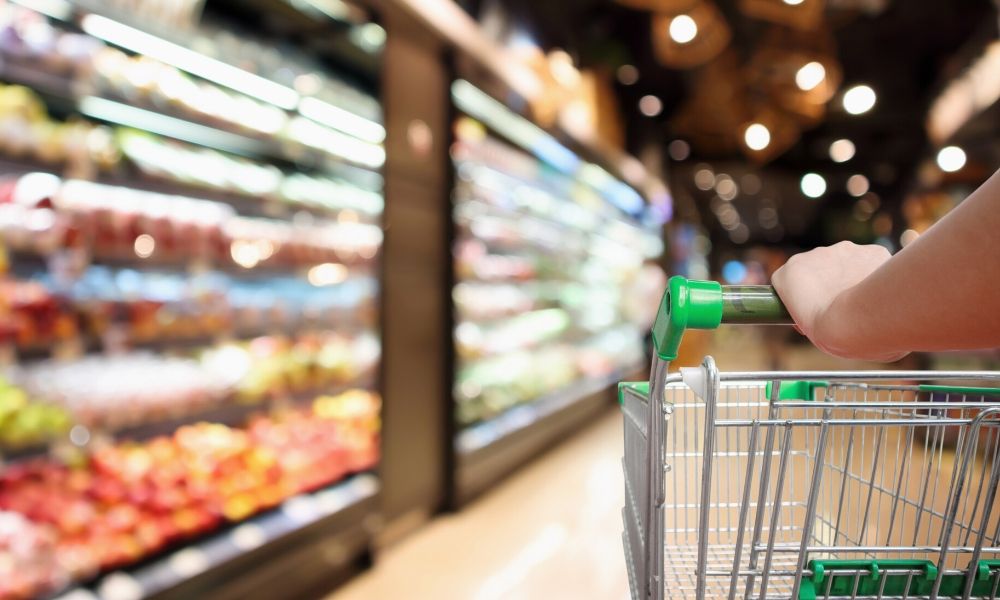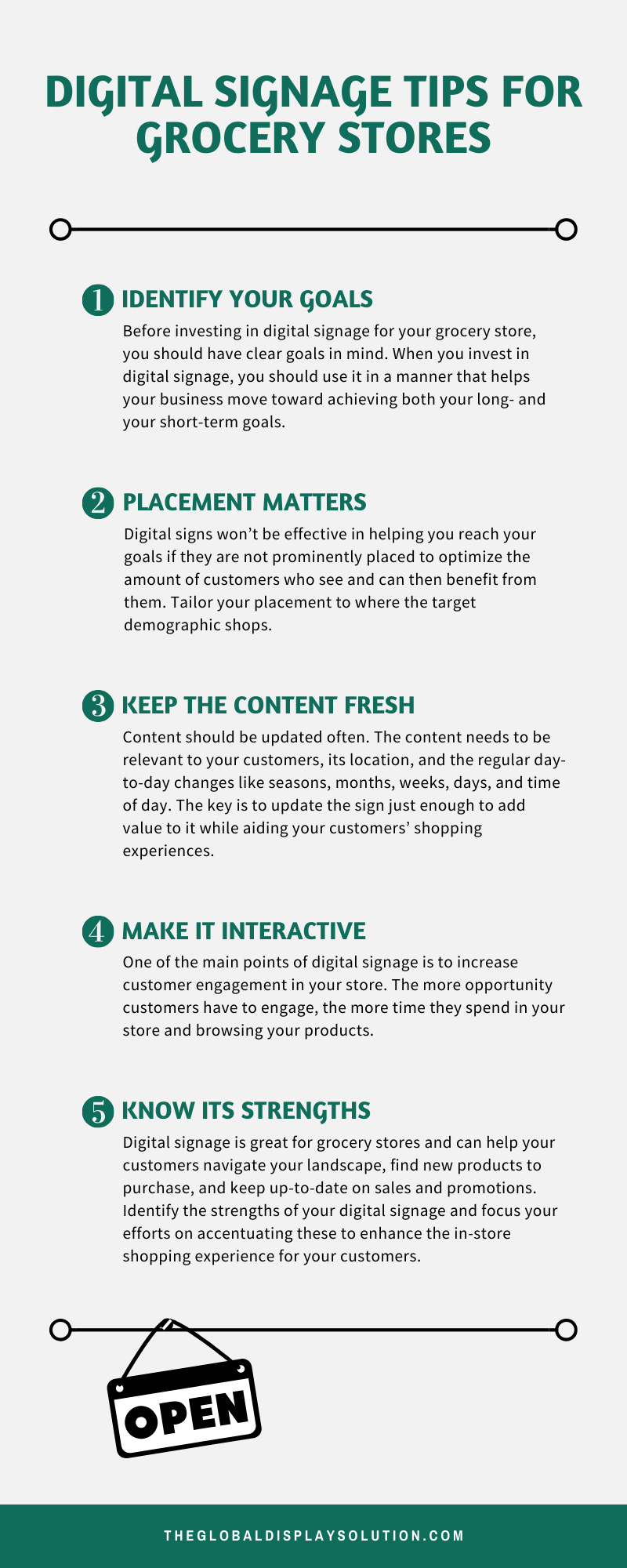Digital Signage Tips for Grocery Stores
February 27, 2020, 3:03 am

Despite the many ways in which consumers can get their groceries now, including meal kit delivery, grocery delivery, and automatically renewing subscriptions, brick-and-mortar grocery stores remain stronger than ever. Aisles are still packed, and food is still flying off the shelves. With the new competition, there is added pressure on stores to provide digital elements to their customers’ shopping experiences. As new conveniences pop up on the digital landscape in the grocery industry, more pressure is put on stores to improve the in-store experience to keep customers coming back and making purchases. One great way to incorporate technology into a grocery store while improving the in-store shopping experience for customers is by employing digital signage. Check out these digital signage tips for grocery stores.
Identify your goals
Before investing in digital signage for your grocery store, you should have clear goals in mind. Think about your long-term goals for your business. Then think about a short-term goal you have. When you invest in digital signage, you should use it in a manner that helps your business move toward achieving both your long- and your short-term goals. For example, if your long-term goal is to open an additional location and your short-term goal is to increase the amount of purchases made by customers already in your store, your digital signage should be focused on promoting impulse buys and promoting sales. This method will lead to more purchases, which leads to more income, which will eventually help you open an additional store location.
Placement matters
Digital signs won’t be effective in helping you reach your goals if they are not prominently placed to optimize the amount of customers who see and can then benefit from them. When you place your signs there are some considerations to make:
Keep your goals in mind
When placing your digital signage, always keep your short-term and long-term goals in the forefront of your mind. It can be easy to get lost in the wonders and multitude of abilities that come with digital signs, but don’t lose sight of their purpose: to get you to your goal.
Think about the target demographic
Consider who you are targeting with the digital signs. Each sign may have a different surface purpose to serve and therefore a different audience. Tailor your placement to where the target demographic shops. For example, if your target demographic is women in their 30s who have children, you may want to place the signs in the baby section or near supplements for new moms. While placing signs where the most foot traffic is extremely important, you also need to find the right type of foot traffic to increase your chances of conversion.
Track the signs’ success
Digital signage is easy to set and forget about—but avoid this pitfall. Instead, track the sign’s successes in its location, and if it’s underperforming to your expectations, consider moving it to a more lucrative spot. There is no end to the places you can put the signs, so don’t be afraid to try out multiple locations to find the one that offers the best return on investment.
Keep the content fresh
Content is king. No matter how cool your digital sign is, it will not be effective if there is no content or content that falls flat with customers. Use these tips to keep your content on par or exceeding your customers’ expectations:
Update it regularly
Content should be updated often. Think of your digital signage as an additional social media feed. Similarly to social media, you want to find the sweet spot of when to update your signage. Too frequent updates can annoy and frustrate customers while too infrequent makes the sign irrelevant, and customers may soon begin to ignore the digital signage. The key is to update the sign just enough to add value to it while aiding your customers’ shopping experiences.
Keep it relevant
The content needs to be relevant to your customers, its location, and the regular day-to-day changes like seasons, months, weeks, days, and time of day. For example, a digital sign displaying a promotion for a special on chicken and placing the sign in the vegan option aisle might be a bad choice. It will also most likely dissuade customers and lead to no conversions in your store. While this example may sound comical, simple mistakes like this one are quite common. That is why it’s so important to think through every aspect of relevancy. Advertising breakfast items in the morning is a smart move, but don’t leave the signs on breakfast at 5 p.m. There are many considerations when trying to keep your content relevant.
Make it interesting
The content on your digital signage needs to be interesting to make an impression on customers—especially customers who are focused with a set grocery list and not simply browsing the aisles. Content that makes sense and is relevant but not engaging will still not create the effect you want to see in your store. When it comes to interesting content, don’t be afraid to experiment. Try out new methods and measure the success of each phrasing and design. Finding what content thoroughly entertains your target demographic is truly a process of trial and error. Much as with the placement experiments, try new things with your content and record what works and what isn’t producing results.
Make it interactive
One of the main points of digital signage is to increase customer engagement in your store. If the information you’re using is static, it eliminates the purpose of digital signs. Make your content interactive. Add in elements that your customers can engage with. The more opportunity customers have to engage, the more time they spend in your store and browsing your products. This can drastically increase the amount of impulse purchases made on a day-to-day basis in your store.
Know its strengths
Digital signage is great for grocery stores and can help your customers navigate your landscape, find new products to purchase, and keep up-to-date on sales and promotions. There are limitation and advantages to digital signage. For example, a digital sign cannot yet replace the need for deli tags, but it can aid in the sale of deli meats by informing customers of promotions, specials, and deli procedures. Identify the strengths of your digital signage and focus your efforts on accentuating these to enhance the in-store shopping experience for your customers.


